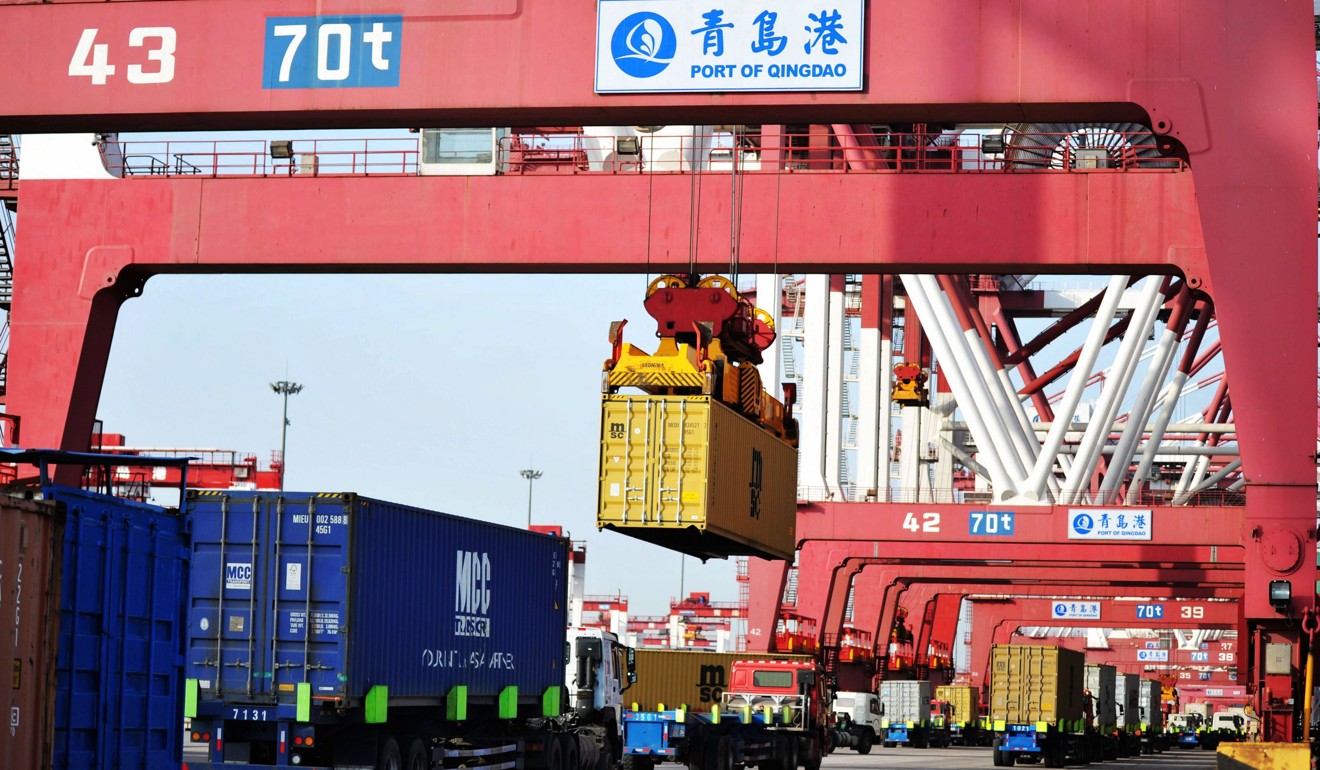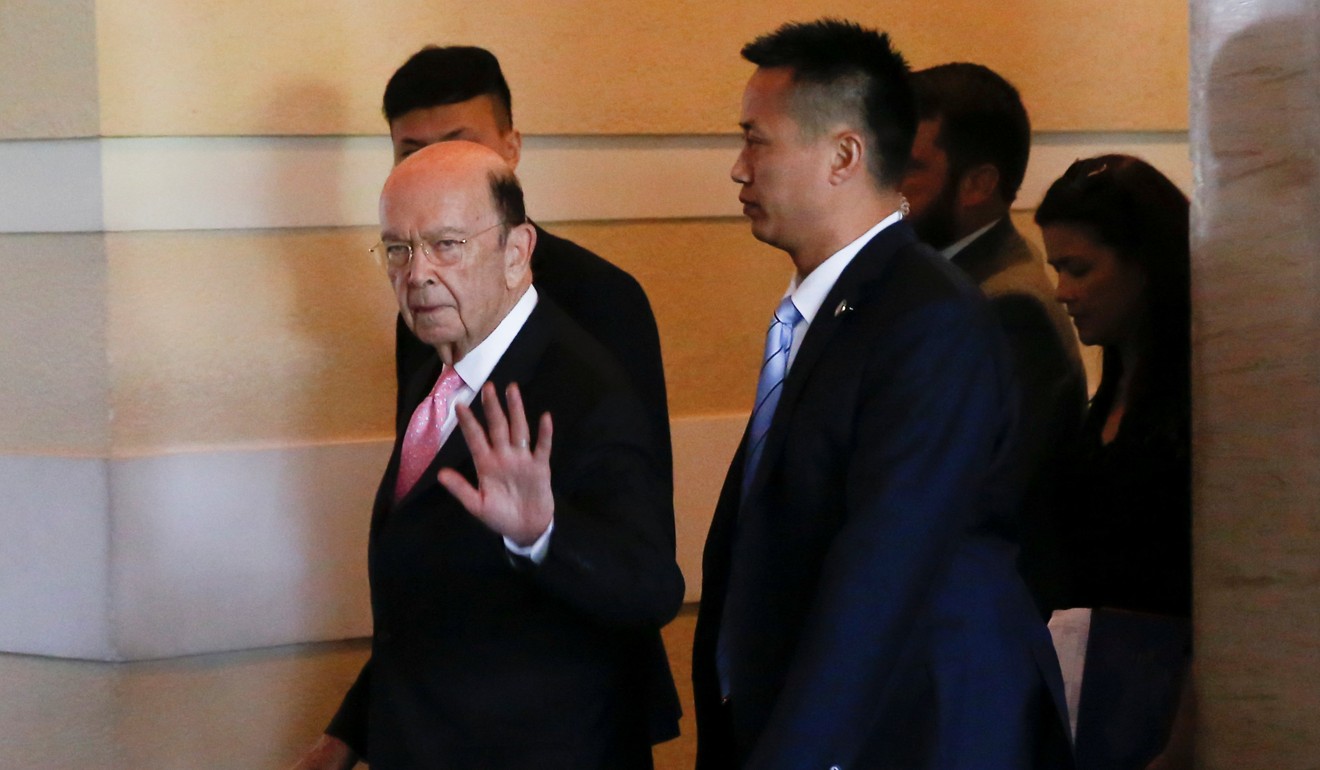
US Commerce Secretary Wilbur Ross arrives in Beijing for trade talks
Meetings set to focus on adding details to China’s May 19 promise to narrow its US$375.2 billion surplus with the United States
US Commerce Secretary Wilbur Ross started to meet officials in Beijing on Saturday for talks on China’s promise to buy more American goods after Washington revived tensions by renewing its threat of higher tariffs on mainland hi-tech exports.
The talks focus on adding details to China’s May 19 promise to narrow its politically volatile surplus in trade in goods with the United States, which reached a record US$375.2 billion last year.
US President Donald Trump threw the status of the talks into doubt by renewing a threat to raise tariffs on US$50 billion of Chinese goods over complaints Beijing steals or pressures foreign companies to hand over technology.

Private sector analysts say that while Beijing is willing to compromise on its trade surplus, it will resist changes that might threaten plans to transform China into a global technology competitor.
The two governments released no schedule for the talks, but China said earlier Ross was due to be in Beijing through to Monday. CCTV reported Ross and his delegation had an initial meeting at the Diaoyutai State Guest House in the afternoon, and the two sides would hold a formal meeting tomorrow. Ross was to have a dinner meeting with Vice-Premier Liu He at the guest house.

He Weiwen, deputy director of the Centre for China and Globalisation and a former Commerce Ministry official in New York, said Beijing was prepared to take measures to narrow the trade gap but it was also prepared for a trade war. “China is willing to sit down and negotiate – the country does have a need to import more consumer goods and natural gas,” he said. “But it is also well prepared. If the US imposes tariffs on Chinese products, the Chinese side may announce retaliatory measures on American products as well.”
He said Washington would use its move on Tuesday to slap punitive tariffs on Chinese imports as a bargaining chip. “The White House’s tariff announcement on May 29 was just part of the negotiations for Wilbur Ross’ visit to Beijing as they try to clinch deals that favour the US,” he said. “The Chinese side has realised that the US has just delayed its trade actions rather than giving them up – but Beijing didn’t expect a change of attitude so quickly.”
China has promised to “significantly increase” purchases of farm goods, energy and other products and services. Still, Beijing resisted pressure to commit to a specific target of narrowing its annual surplus with the United States by US$200 billion.
Following Beijing’s announcement, US Treasury Secretary Steven Mnuchin said the dispute was “on hold”. But the truce appeared to end with this week’s announcement Washington was going ahead with tariff increases on technology goods and would also impose curbs on Chinese investment and purchases of US hi-tech exports.
The move reflects growing American concern about China’s status as a potential tech competitor and complaints Beijing improperly subsidises its fledgling industries and shields them from competition.
Foreign governments and businesses cite strategic plans such as “Made in China 2025”, which calls for state-led efforts to create Chinese industry leaders in areas from robots to electric cars to computer chips.
“The US focus on so-called industrially significant technologies heightens the risk of escalation between the two countries,” BMI Research said in a report. “Indeed, while China has shown itself willing to compromise in the area of trade deficit reduction, it will not take any actions which threaten its strategically important Made in China 2025 programme.”
Trump also has threatened to raise tariffs on an additional US$100 billion of Chinese goods, but gave no indication this week whether that would go ahead.
Earlier, China responded with a threat to retaliate with higher duties on a US$50 billion list of American goods including soybeans, small aircraft, whiskey, electric vehicles and orange juice. It criticised Trump’s move this week and said it reserved the right to retaliate but avoided repeating its earlier threat.
Trade analysts warned Ross’ hand might be weakened by the Trump administration’s decision on Thursday to go ahead with tariffs on steel and aluminium imports from Canada, Europe and Mexico.
That might alienate allies who share complaints about Chinese technology policy and a flood of low-priced steel, aluminium and other exports they say are the result of improper subsidies and hurt foreign competitors.


